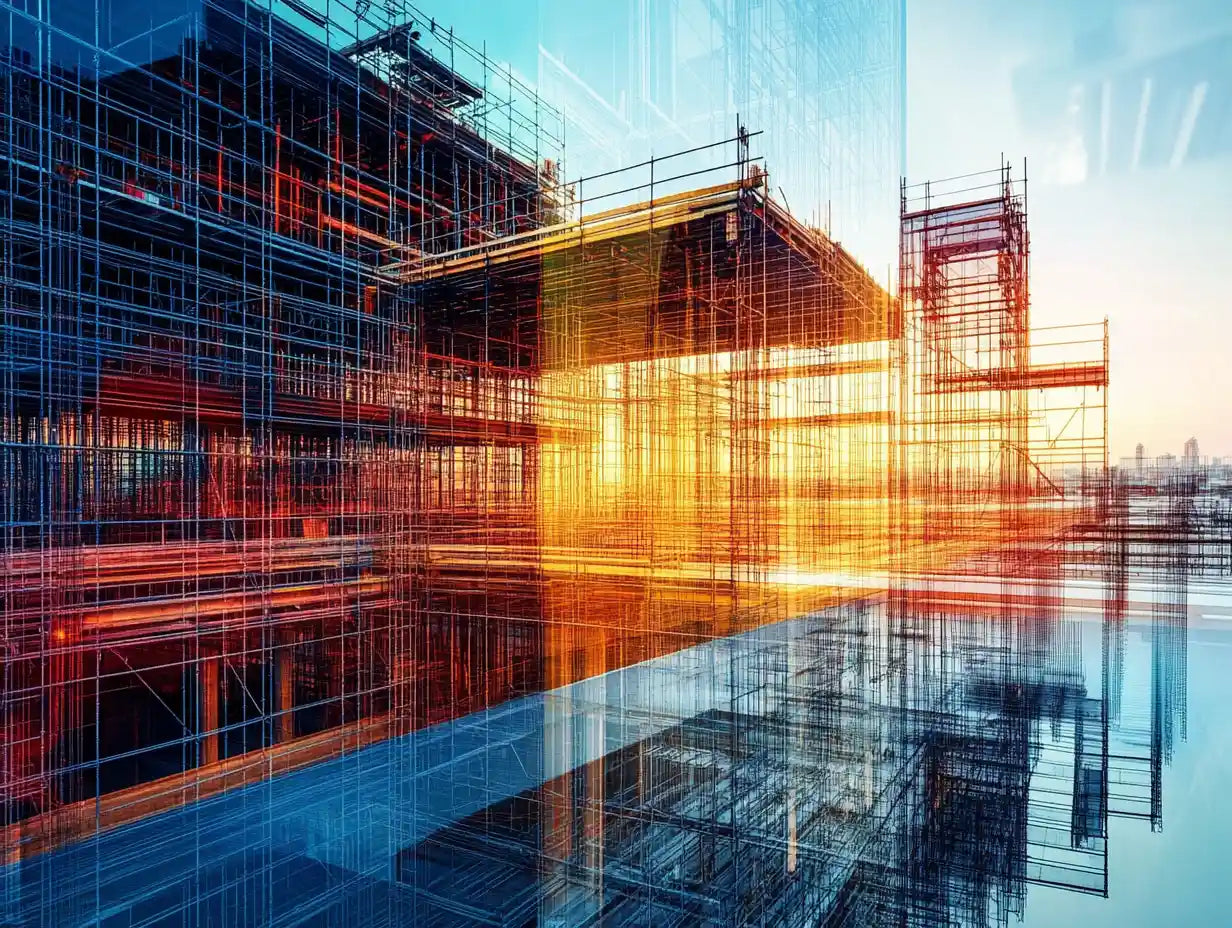
As we navigate the challenges of the modern world, the construction industry stands at a crossroads, blending innovation with sustainability. Cutting-edge construction techniques are reshaping how we build, allowing us to create structures that not only meet our needs but also respect our planet. With a focus on sustainable practices, these advancements promise to drive economic growth while minimizing environmental impact.
In this article, we’ll explore the latest trends and technologies that are revolutionizing construction. From eco-friendly materials to smart building systems, these techniques are not just about efficiency; they're about building a better future. Join us as we delve into how these innovations are paving the way for a more sustainable and economically viable construction landscape.
Overview of Cutting Edge Construction Techniques
Cutting-edge construction techniques optimize efficiency, reduce waste, and enhance sustainability. These innovations push the boundaries of traditional building methods, making projects more adaptable and environmentally friendly.
Prefabrication and Modular Construction
Prefabrication and modular construction involve assembling building components at off-site locations. We utilize this method to minimize construction time and reduce material waste. Projects like single-family homes and commercial buildings benefit from the speed and precision of modular systems.
3D Printing
3D printing in construction enables us to create complex structures layer by layer. This transformative technique lowers labor costs and material usage. Recent developments in 3D-printed structures include housing units made from recycled materials, showcasing both sustainability and innovation.
Sustainable Materials
Sustainable materials, such as bamboo, recycled steel, and eco-friendly concrete, play a crucial role in modern construction. We prioritize these materials to lower the carbon footprint of our projects. Using sustainable materials contributes to long-term durability and energy efficiency.
Smart Building Systems
Smart building systems integrate advanced technologies for better energy management. These systems monitor and adjust building performance in real-time, optimizing energy consumption. We see smart sensors and automation technologies enhancing user comfort while minimizing operational costs.
Green Roofs and Living Walls
Green roofs and living walls contribute to urban biodiversity and improve air quality. We implement these features to promote environmental benefits while providing aesthetic value. These techniques also help with temperature regulation, reducing the need for artificial heating and cooling.
Advanced Building Information Modeling (BIM)
Advanced Building Information Modeling (BIM) streamlines project management through detailed digital representations of buildings. We use BIM to enhance collaboration among stakeholders, reduce errors, and optimize resource allocation. This technique allows us to visualize design elements, leading to more informed decision-making.
Energy-Efficient Technologies
Energy-efficient technologies, such as geothermal heating and solar energy systems, enhance overall building performance. We implement these systems to reduce energy costs and promote renewable energy sources. Incorporating energy-efficient technologies aligns with our goal of achieving sustainable construction practices.

Benefits of Sustainable Construction
Sustainable construction techniques offer a range of benefits, directly impacting the environment and the economy. By prioritizing eco-friendly practices, we foster a healthier planet while promoting financial growth within the construction industry.
Environmental Impact
Sustainable construction significantly reduces negative environmental impacts. Using eco-friendly materials, such as reclaimed wood and recycled steel, conserves natural resources and minimizes waste. Implementing energy-efficient technologies, like solar panels and geothermal systems, lowers energy consumption and greenhouse gas emissions. Green roofs and living walls enhance biodiversity and improve air quality in urban areas. Collectively, these approaches contribute to healthier ecosystems and promote sustainability in the built environment.
Economic Advantages
Sustainable construction also drives economic growth. Utilizing prefabrication and modular techniques reduces construction time, which leads to lower project costs. Buildings designed with energy efficiency in mind result in substantial long-term savings on utility bills. Enhanced property values often accompany sustainable features, making investments more lucrative. Additionally, optimizing construction processes through Building Information Modeling (BIM) leads to better resource management and reduced waste, which directly impacts overall project profitability.

Innovative Techniques in the Industry
Innovative techniques are reshaping the construction landscape, enhancing efficiency and sustainability. We explore key methods driving this transformation below.
Modular Construction
Modular construction involves prefabricating building sections in a factory setting, then transporting them to the site for assembly. This approach reduces construction time by up to 50% and minimizes material waste, as components are produced under controlled conditions. Examples of successful modular projects include multi-story apartment buildings and schools. Modular construction also allows for greater design flexibility, enabling us to create customized structures that meet specific client needs.
3D Printing in Construction
3D printing revolutionizes construction by allowing us to create complex structures layer by layer using materials like concrete and plastic. This technique significantly lowers labor costs and material usage, with some projects achieving a reduction of up to 60% in waste. Structures created through 3D printing include homes, bridges, and intricate architectural features. Additionally, this technology enables rapid prototyping, allowing for efficient design testing and adjustments before final production.
Green Building Materials
Green building materials play a crucial role in sustainable construction. We utilize materials like bamboo, reclaimed wood, and recycled steel, which lower carbon footprints while maintaining structural integrity. For instance, bamboo grows quickly and absorbs carbon dioxide, making it an eco-friendly alternative. Utilizing recycled steel helps divert waste from landfills and reduces the demand for new resources. Incorporating these materials enhances energy efficiency and promotes a healthier indoor environment for occupants.

Case Studies of Successful Implementation
We explore several case studies showcasing successful implementations of cutting-edge construction techniques within residential and commercial projects. These examples illustrate the tangible benefits of integrating sustainable practices.
Residential Projects
We focus on the "Green House," a residential development in Austin, Texas, where modular construction methods significantly reduced construction time by 40%. Using prefabricated modules, builders completed homes in just three months, minimizing on-site waste by 30%. The project incorporated sustainable materials, such as reclaimed wood and recycled steel, which not only reduced carbon footprints but also enhanced indoor air quality. This approach attracted eco-conscious buyers, leading to increased demand and property values.
We also highlight the "Eco-Domes" community in California, featuring 3D-printed homes using bio-based materials. The innovative design lowered labor costs by 50% and streamlined the construction process. With solar panels and rainwater harvesting systems, these homes achieve net-zero energy consumption. Residents benefit from reduced utility costs and a smaller environmental footprint, reinforcing the project's commitment to sustainability.

Commercial Developments
We examine the "Green Plaza," a commercial development in Chicago, combining advanced energy-efficient technologies with smart building systems. This project integrated Building Information Modeling (BIM) for improved project management and coordination among stakeholders. Implementing geothermal heating and solar panels reduced energy consumption by 60%, resulting in long-term operational savings.
We also discuss "The Vertical Garden" corporate building in New York City, which features living walls and green roofs that promote biodiversity and improve air quality. Utilizing sustainable materials, the project adhered to LEED certification standards, enhancing its marketability. The incorporation of intelligent energy management systems ensures optimal energy usage, further increasing the building's sustainability credentials.
These case studies exemplify how cutting-edge techniques in construction not only promote sustainability but also deliver substantial economic advantages, ultimately reshaping our built environment for the better.

Future Trends in Construction Techniques
Emerging trends are reimagining construction techniques, firmly aligning with sustainability and economic viability. Notable developments include the increased adoption of artificial intelligence (AI) and machine learning to enhance project efficiency. AI streamlines workflow management, predicts potential challenges, and optimizes resource allocation, thus reducing costs and project timelines.
Next, we observe an upswing in the use of drones for site surveying and monitoring. Drones provide real-time data, ensure safety compliance, and assess site conditions more accurately than traditional methods. Their ability to quickly capture high-resolution images also aids in project planning and execution.
Furthermore, sustainable construction practices continue to evolve with the adoption of biophilic design principles. These principles integrate natural elements into building projects, aiming to improve occupants' well-being and create more productive environments. Enhanced natural lighting, vegetation integration, and natural materials define this approach.
Additionally, cross-laminated timber (CLT) emerges as a preferred building material. CLT provides high strength-to-weight ratios, minimal waste production, and lower carbon emissions, supporting efforts toward sustainable building. Projects utilizing CLT can significantly reduce construction time and costs while enhancing the aesthetic appeal.
The shift toward renewable energy sources is another pivotal trend. We increasingly see buildings equipped with solar panels and wind turbines, generating energy on-site and minimizing reliance on traditional power grids. This incorporation of renewable technologies aligns with global initiatives aimed at achieving carbon neutrality.
Robotics also plays a crucial role in future construction methods. Robotic systems enhance precision in tasks such as bricklaying and welding, mitigating human error and increasing productivity. These systems enable teams to focus on complex aspects of construction while robots handle repetitive tasks.
Finally, we anticipate a greater emphasis on life cycle assessment (LCA) in project planning. LCA evaluates the environmental impact of buildings throughout their life cycles, promoting informed decisions around materials and construction practices that reduce negative ecological effects.
Together, these future trends exemplify a commitment to transformative practices within the construction sector. By embracing innovation, we can promote sustainability while fostering economic growth, ultimately enhancing the built environment we share.

Conclusion
Embracing cutting-edge construction techniques is essential for a sustainable future. As we integrate innovative practices into our projects, we not only enhance efficiency but also contribute to a healthier planet. The shift towards eco-friendly materials and smart technologies illustrates our commitment to responsible building.
By adopting these advancements, we’re paving the way for economic benefits alongside environmental stewardship. The success stories we've shared show that sustainability and profitability can go hand in hand. As we move forward, it’s crucial to continue exploring new trends and technologies that will further enrich our construction practices.
Together, we can foster a built environment that prioritizes both sustainability and economic viability, ensuring a brighter future for generations to come.


Comments (0)
Back to Architecture and Design Blog